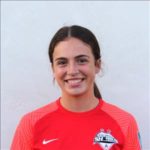Can players afford to take time off?
 “But we can’t afford to rest. Our archnemesis has indoor space and they’re training twice a week. Plus, they’ve registered for two indoor leagues and a futsal session. We can’t rest; we’ll lose ground.”
“But we can’t afford to rest. Our archnemesis has indoor space and they’re training twice a week. Plus, they’ve registered for two indoor leagues and a futsal session. We can’t rest; we’ll lose ground.”
If this is going through your head, you’re not alone. It’s the “keep up with the Joneses” mentality that is rampant in our parenting and our youth sports today. But it is fear-based and not supported by science.
Yes, in the time off, their fitness will decline a bit. Their strength will recede some. Their speed and stamina will decrease. Their quickness will be…slower. Their flexibility may wane. All of these will return when they return to training. Which they will need to do properly and in time to prepare for the spring season. January-February is plenty soon for this. They can afford to take time off.
Complete rest from the sport is becoming hard to come by with our soccer players and other youth athletes. All-year-round is trending toward standard. This is a shame.
Rest for recovery may be the best kept secret in the winning coach’s arsenal. We can’t “see” the repair, recovery and rejuvenation accrued during rest. We have to wait to see the return of energy and excitement. But we see certainly see the consequences of the opposite approach: fatigue, burnout and injury top the list.
Layered on top of intense competition with the national team, league play and friendlies on the “fan tour” are added stressors to their bodies. Even perfectly tuned athletes are human. We are not designed to go without rest for long. Complete rest allows complete recovery.
Some would say that 26-year-old megastar Lionel Messi’s current rash of injuries is due to too little time off. His competition plus international travel and play in charity matches, though lighter in intensity, have put continuous pressure on his body to sustain itself. One might see the same in the multiplicity of injuries to young U.S. Women’s National Team players Alex Morgan, Tobin Heath, Megan Rapinoe and others as of similar origin.
Time off from competition and play allows recovery in all the facets of an athlete’s life. That’s especially important for our young people, high-school students, and increasingly our middle school kids, who are under a great deal of stress socially, mentally, psychologically and physically. Given those complexities, managing the physical recovery may be the easiest of all.
I advise coaches of travel, select or club level players to schedule recovery days into the training schedule and rest into season planning. When tournaments go on the calendar, ink in the practice days and the R&R days. That way you won’t be tempted to second-guess yourself, and give into the Joneses who have double and triple-booked their teams.
Generally, there are two two-to-three month blocks, probably Sept-Oct-Nov and March-April-May, for peak match performance. More intense fitness conditioning can be safely performed preseason with recovery time planned during the winter break and the summer break. Trends in the United States are toward “no such thing as a preseason” because we’re always in season. This needs to change if we want to keep our athletes healthy and progressing in their training.
Granted, with advanced high school, college and pro players, planning the schedule for training, competition and rest is complex. These players train most days of the week and have games, tournaments or championships where they want to be in peak form. Coaches must use good sport science to employ what’s known as periodization training with these athletes. This requires considering the entire year of training and play, identifying the performance objectives and designing variations in conditioning, skill sessions, rest and recovery to best meet these objectives.
A sample competitive team periodization plan might look like this:
- July-Aug — higher volume fitness build up
- *Sept-Oct-Nov — in season, decreased conditioning with increased intensity of play
- Dec-Jan-Feb — intensity decreases, gradual reconditioning as season approaches
- *Mar-Apr-May — similar to fall
- June — break
*In season, general conditioning declines and sport-specific game conditioning takes precedence. Nov/Dec and June are natural ‘break’ times.
Sure. During times of rest, we don’t expect peak performance. But rest is necessary for improved future performance. We’ve got to give the whole body time off to re-group. Think about how good you feel after a good night’s sleep. You can take on the world.
That’s what we want to train into our athletes. Leave it all on the field, then rest. Come back refreshed and energized physically and mentally, stronger, more focused and hungry to play well. They’ll also be better able to fend off injuries without the plaguing soreness and exhaustion that were additional opponents in-season. That feels great. It’s totally worth the investment and a whole lot less costly than perpetual injury.
Question: What about shifting to other sports during the “offseason”? Coaches, players, parents, do you think this helps or hinders our athletes?
SOCCERWIRE MARKETPLACE
- The St. James FC Virginia 2024-2025 Travel Tryouts
- TSJFCV - Hiring Travel Soccer Coaches
- Hiring: U13-U19 Boys Director
- Coaches Needed
- Train with professional AC Milan coach
- Loudoun Soccer 2024/25 Travel Player Placement Sessions
- Official Elite Summer Soccer Camps with Elite Pro Clubs in Europe
- Official EPL Tickets: ARSENAL, LIVERPOOL, TOTTENHAM & MORE
- Travel to Denmark for Dana Cup Hjørring 2024
- New England Surf Challenge and Showcase 2024













